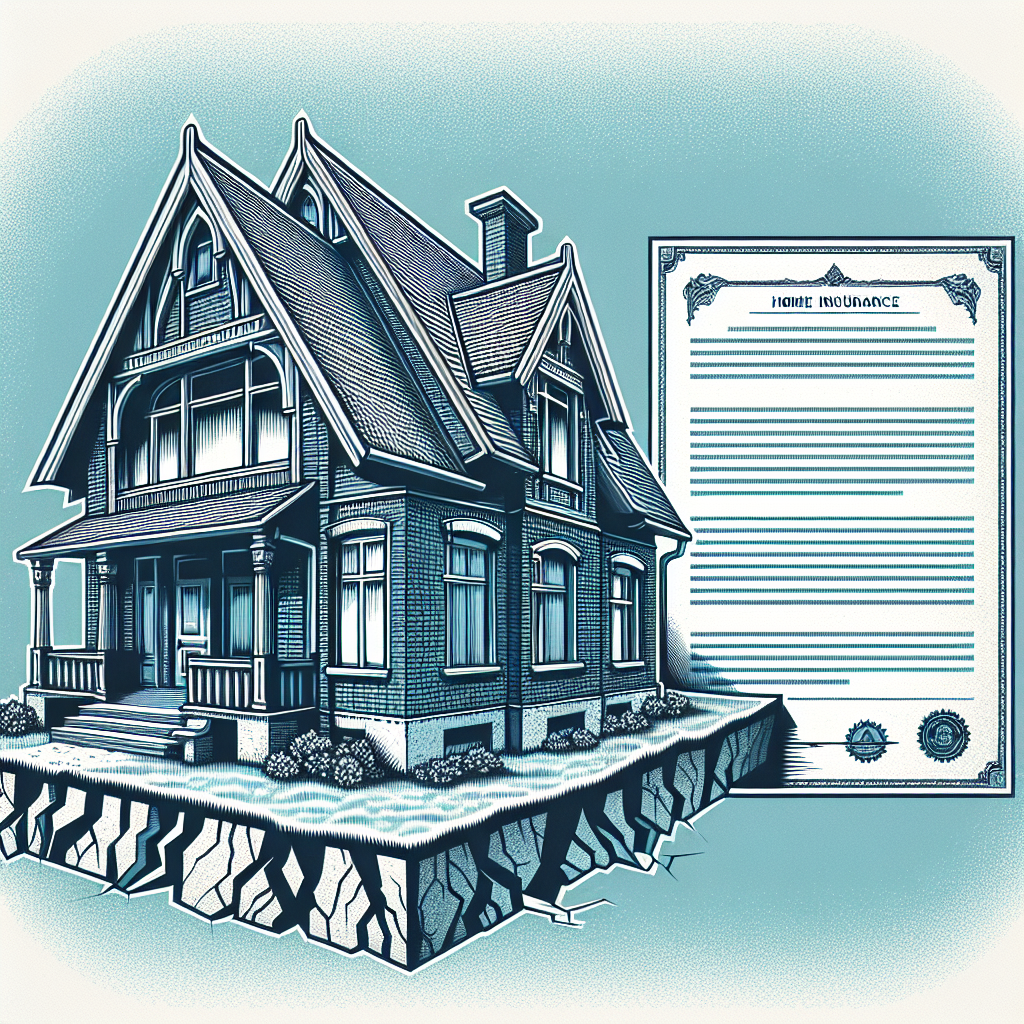Filed under Home Insurance on
Comprehensive Guide to Home Insurance with Earthquake Coverage

When it comes to safeguarding your home, having the right insurance in place is paramount. Unfortunately, many homeowners overlook the importance of earthquake coverage within their policies. This comprehensive guide will delve into the nuances of home insurance with earthquake coverage, equipping you with the knowledge needed to protect your most valuable asset from seismic surprises.
Understanding Home Insurance
Home insurance provides financial protection against a variety of risks that can affect your property, such as fire, theft, and certain natural disasters. However, standard home insurance policies typically exclude earthquake damage. This is where earthquake coverage becomes crucial for homeowners, especially those in seismic-prone regions.
Why Consider Earthquake Coverage?
Earthquakes can cause extensive damage in mere seconds, leading to costly repairs. Understanding the relationship between general home insurance and specific earthquake coverage is vital. Here's why you should consider adding earthquake insurance:
- Geographical Risk: If you live near fault lines or in earthquake-prone areas, the risk increases, making coverage essential.
- Financial Security: Earthquake damage can be catastrophic financially. Having coverage ensures you won't bear the burden alone.
- Peace of Mind: Knowing you're protected allows you to confidently invest in your home's structure and personal property.
What Does Earthquake Coverage Include?
Earthquake insurance typically covers rebuilding or repairing your home, replacing personal property, and additional living expenses if you're displaced. Policies can vary, so understanding what's included is crucial:
Dwelling Protection
This covers the structural damage to your home. Check the specifics with your insurer to ensure comprehensive protection.
Personal Property
Personal belongings such as furniture and electronics can also be covered. Inventorying your possessions can help determine the level of coverage needed.
Additional Living Expenses (ALE)
If displacement occurs, ALE helps cover temporary housing and associated costs, providing financial relief during recovery.
Choosing the Right Policy
Not all earthquake policies are created equal. Here are some factors to consider when selecting the right coverage:
- Deductibles: Earthquake policies often come with high deductibles. Understanding and choosing a deductible you can afford is critical.
- Coverage Limits: Ensure the limits meet your rebuilding and replacement costs needs.
- Exclusions: Pay attention to specific exclusions or conditions in the policy.
- Insurance Company Reputation: Research and select a reputable insurer with positive customer feedback and strong financial ratings.
Cost Factors and Saving Tips
Cost is a significant consideration with earthquake insurance. Here’s what affects the pricing:
Location: Risk level based on location directly influences premiums. Higher risk equals higher costs.
Home Characteristics: Older homes or those built with certain materials may incur higher premiums due to increased vulnerability.
To save, consider these tips:
- Retrofit Your Home: Strengthening your home can lower premiums. Consider reinforcing foundations or securing heavy items.
- Compare Quotes: Don’t settle for the first quote. Comparing different insurance providers can yield better rates.
- Bundle Policies: Some providers offer discounts when bundling home insurance with earthquake coverage.
Understanding Policy Terms
Deciphering insurance terms can be daunting. Here are a few key terms to be familiar with:
Deductible
This is the amount you pay before the insurance kicks in. It's generally a percentage of the property's value, ranging from 10-20%.
Premium
The amount you pay annually or monthly for coverage. It varies based on risk factors and coverage limits.
Exclusion
Certain hazards or property types that aren’t covered. Reading the fine print helps avoid unexpected surprises.
Expert Insights and Industry Trends
According to insurance experts, the demand for earthquake insurance is rising as awareness of seismic risks grows. Trends indicate a shift towards more customizable policies that cater to individual homeowner needs.
Technology and data analysis are playing a significant role, assisting insurers in accurately assessing risks and offering more personalized pricing. Furthermore, some regions are pushing for mandatory earthquake coverage, reflecting its growing importance.
Steps to Obtain Earthquake Insurance
- Assess Your Risk: Evaluate your geographical risk and home vulnerability.
- Research Providers: Look into different insurers specializing in earthquake coverage.
- Get Quotes: Contact providers for quotes, ensuring a detailed understanding of coverage and costs.
- Review Policy Details: Scrutinize the policy, focusing on coverage limits, exclusions, and terms.
- Make an Informed Decision: Choose a policy that balances affordability with comprehensive coverage.
Final Thoughts
Home insurance with earthquake coverage is not just a financial decision—it's a strategic one that protects your investment and peace of mind. By understanding the key elements of earthquake insurance, you can make informed choices that ensure your home is well-protected against natural disasters.
Whether you’re living in a seismic hotspot or simply wish to be extra cautious, having an adequate policy in place provides invaluable security for you and your family. Stay informed to stay protected, and take proactive steps today to safeguard your future.





